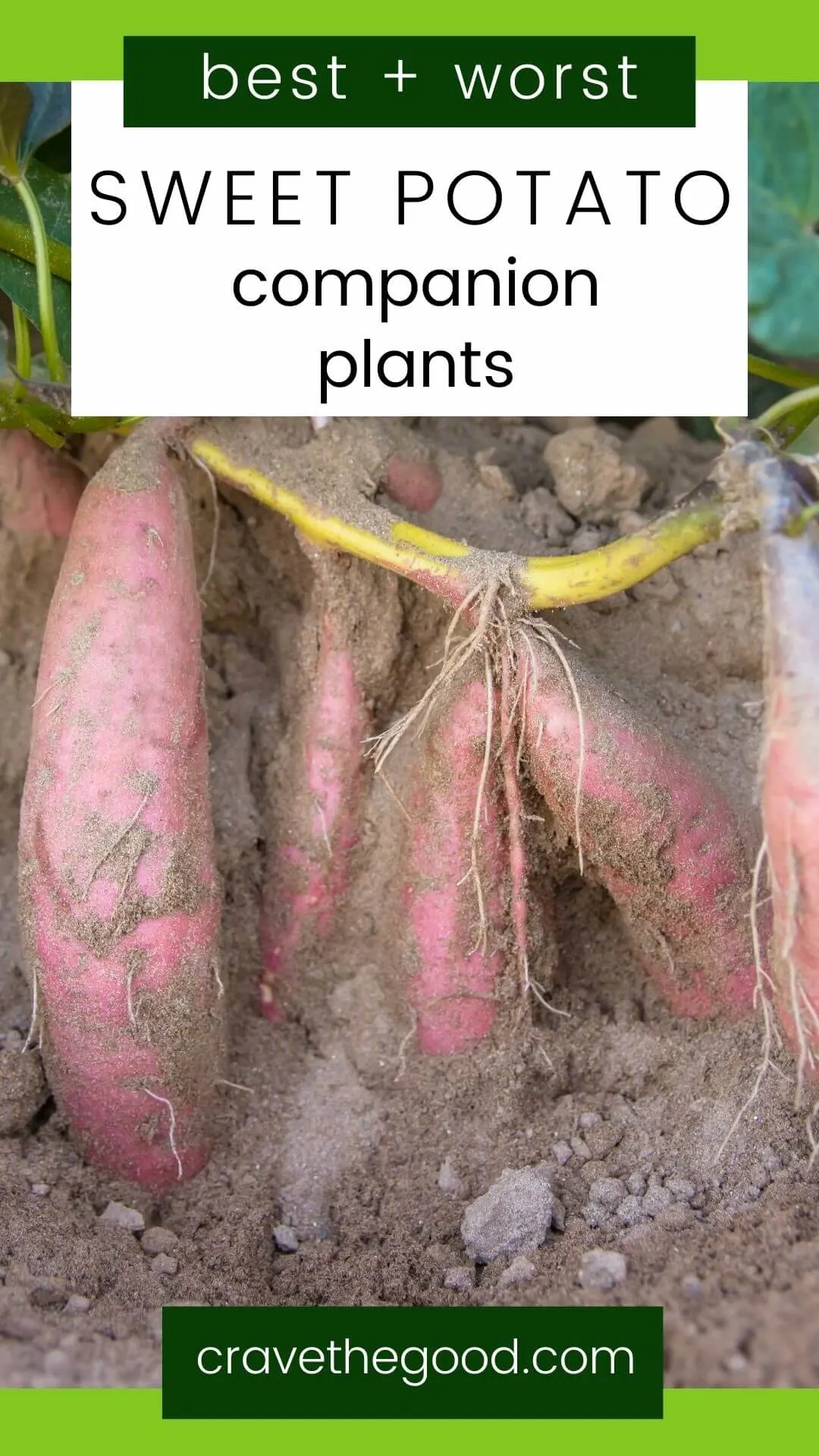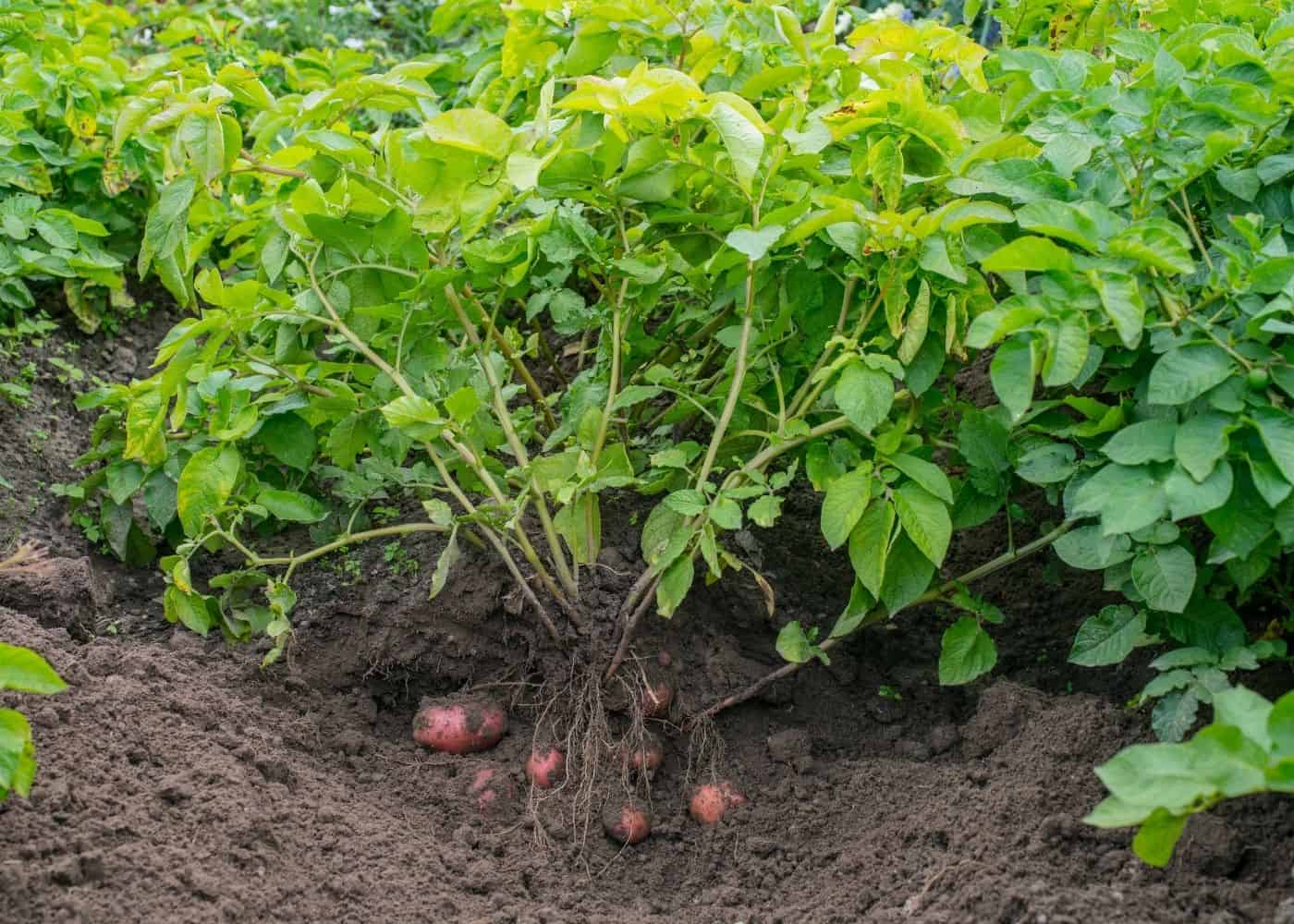The Ultimate Guide To Companion Planting Potatoes
The Ultimate Guide to Companion Planting Potatoes
Potatoes are a delicious and versatile vegetable that can be enjoyed in many different ways. But did you know that companion planting can help you grow healthier and more productive potato plants?
Companion planting is the practice of planting different types of plants together in order to benefit each other. Some plants can help to attract beneficial insects, improve soil quality, or deter pests. By choosing the right companion plants for your potatoes, you can boost their growth and yield.
In this guide, we will discuss the benefits of companion planting for potatoes, and provide a list of the best companion plants for potatoes. We will also discuss what plants to avoid planting near potatoes.
Benefits of Companion Planting for Potatoes
There are many benefits to companion planting potatoes. Some of the most common benefits include:
- Attracting beneficial insects. Many companion plants attract beneficial insects, such as ladybugs, lacewings, and hoverflies. These insects help to control pests that can damage potato plants, such as aphids, spider mites, and whiteflies.
- Improving soil quality. Some companion plants, such as legumes, can help to improve soil quality by fixing nitrogen. Nitrogen is an essential nutrient for plant growth, and by fixing nitrogen, companion plants can help to provide your potato plants with the nutrients they need to thrive.
- Deterrent pests. Some companion plants can help to deter pests from attacking potato plants. For example, marigolds and nasturtiums are known to repel aphids and other pests.
- Disease prevention. Some companion plants can help to prevent diseases from spreading to potato plants. For example, chamomile and yarrow can help to prevent the spread of late blight, a serious disease that can destroy potato plants.
Best Companion Plants for Potatoes
The best companion plants for potatoes will vary depending on your climate and growing conditions. However, some of the most common and effective companion plants for potatoes include:
- Beans: Beans are a great companion plant for potatoes because they fix nitrogen in the soil. This helps to improve soil quality and provide your potato plants with the nutrients they need to thrive.
- Carrots: Carrots help to repel nematodes, which are pests that can damage potato plants.
- Cucumbers: Cucumbers help to attract beneficial insects, such as ladybugs and lacewings. These insects help to control pests that can damage potato plants.
- Chamomile: Chamomile helps to prevent the spread of late blight, a serious disease that can destroy potato plants.
- Nasturtiums: Nasturtiums help to repel aphids and other pests.
- Onions: Onions help to repel root knot nematodes, which are pests that can damage potato plants.
- Peas: Peas are a great companion plant for potatoes because they fix nitrogen in the soil. This helps to improve soil quality and provide your potato plants with the nutrients they need to thrive.
- Spinach: Spinach helps to suppress weeds, which can compete with potato plants for water and nutrients.
What Plants to Avoid Planting Near Potatoes
There are a few plants that you should avoid planting near potatoes. These plants include:
- Eggplants: Eggplants are susceptible to the same diseases as potatoes, so planting them together can increase the risk of disease spread.
- Fennel: Fennel can suppress the growth of potato plants.
- Melons: Melons compete with potato plants for water and nutrients.
- Tomatoes: Tomatoes are susceptible to the same diseases as potatoes, so planting them together can increase the risk of disease spread.
Conclusion
By choosing the right companion plants for your potatoes, you can boost their growth and yield. Companion planting can also help to attract beneficial insects, improve soil quality, and deter pests.
If you are new to companion planting, start by choosing a few of the plants on our list of best companion plants for potatoes. Plant them in your potato patch and see how they do. You may be surprised at how much of a difference they make!
Potatoes are a delicious and versatile vegetable that can be enjoyed in many different ways. But did you know that the plants you grow around your potatoes can have a big impact on their flavor and yield?
That's where companion planting comes in. Companion planting is the practice of planting certain plants together to benefit each other. For example, some of the best companion plants for potatoes include:
- Beans: Beans fix nitrogen in the soil, which helps to improve the growth of potatoes.
- Cabbage family plants: These plants have shallow root systems that won't compete with potatoes for space or nutrients.
- Herbs: Many herbs, such as chives, basil, and mint, help to repel pests and attract beneficial insects.
If you're looking for more information about the best companion plants for potatoes, I recommend visiting Gardenia Inspiration. This website has a comprehensive list of companion plants, as well as tips on how to plant them together for the best results.
FAQ of best companion plants for potatoes
Q: What are the best companion plants for potatoes?
A: The best companion plants for potatoes are those that have different root systems and nutrient requirements. This helps to prevent competition for resources and can also help to deter pests. Some of the best companion plants for potatoes include:
- Beans: Beans are legumes, which means that they fix nitrogen in the soil. This can help to improve the growth and yield of potatoes.
- Cabbage family plants: Cabbage family plants, such as broccoli, cauliflower, and kale, have shallow root systems that will not compete with potatoes for space or nutrients. They can also help to deter pests, such as aphids and cabbage loopers.
- Corn: Corn is a tall plant that can help to shade potatoes and protect them from the sun. It can also help to improve the flavor of potatoes.
- Herbs: Herbs, such as chives, basil, and parsley, can help to deter pests and attract beneficial insects. They can also add flavor to potatoes.
- Marigolds: Marigolds are flowers that can help to deter pests, such as nematodes and wireworms. They can also help to improve the drainage of soil, which can benefit potatoes.
Q: What plants should I avoid planting near potatoes?
A: There are a few plants that you should avoid planting near potatoes. These include:
- Tomatoes: Tomatoes are in the same family as potatoes, and they can compete for resources.
- Eggplants: Eggplants are also in the same family as potatoes, and they can compete for resources.
- Peppers: Peppers are in the same family as potatoes, and they can compete for resources.
- Cucumbers: Cucumbers have shallow root systems that can compete with potatoes for water and nutrients.
- Pumpkins/Squash: Pumpkins and squash have large root systems that can compete with potatoes for space and nutrients.
Q: What are the benefits of companion planting with potatoes?
A: There are several benefits to companion planting with potatoes. These include:
- Improved growth and yield: Companion plants can help to improve the growth and yield of potatoes by providing them with nutrients, water, and shade.
- Deterrent to pests: Companion plants can help to deter pests, such as aphids, beetles, and nematodes.
- Attraction of beneficial insects: Companion plants can attract beneficial insects, such as ladybugs and lacewings, which can help to control pests.
- Improved soil health: Companion plants can help to improve soil health by adding nutrients, breaking down organic matter, and suppressing weeds.
Q: How do I plant companion plants with potatoes?
A: When planting companion plants with potatoes, it is important to consider the size and growth habits of the plants. You should also plant them in a way that will help to deter pests and improve soil health.
Here are some tips for planting companion plants with potatoes:
- Plant taller companion plants, such as corn, on the north or west side of potato plants to provide shade.
- Plant shallow-rooted companion plants, such as cabbage family plants, between potato plants to prevent competition for water and nutrients.
- Plant herbs, such as chives and basil, around the perimeter of potato plants to deter pests.
- Plant marigolds around potato plants to improve drainage and deter pests.
Image of best companion plants for potatoes
5 different images of "best companion plants for potatoes" from Pinterest:
- Chives: Chives are a great companion plant for potatoes because they help to repel pests, such as aphids and beetles. They also help to improve the flavor of potatoes.

- Beans: Beans are another great companion plant for potatoes because they help to fix nitrogen in the soil. This is beneficial for potatoes, as they are heavy feeders.

- Onions: Onions are a good companion plant for potatoes because they help to repel nematodes, which are a type of soil-borne pest that can damage potatoes.

- Nasturtiums: Nasturtiums are a beautiful flower that can also be a beneficial companion plant for potatoes. They help to attract beneficial insects, such as ladybugs, which help to control pests.

- Marigolds: Marigolds are another flower that can be a beneficial companion plant for potatoes. They help to repel nematodes and other pests.

Post a Comment for "The Ultimate Guide To Companion Planting Potatoes"